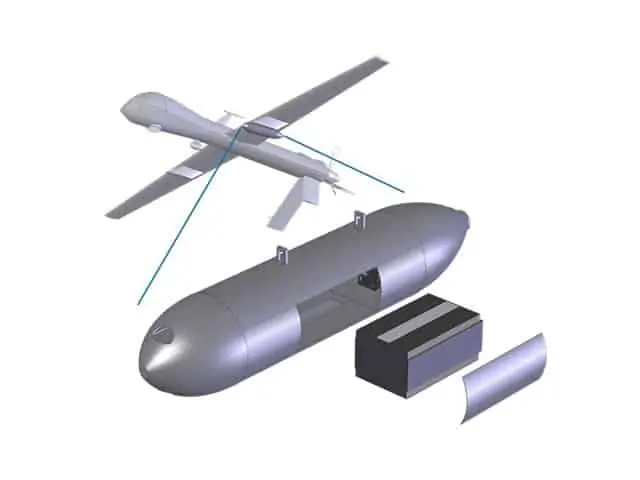SRC, Inc., a defense and aerospace research & development firm, has announced that it has delivered the first Agile Condor pod system to the Air Force Research Lab (AFRL) in Rome, NY. The Agile Condor pod system is a scalable, low cost, size, weight and power (low-CSWaP) hardware architecture that enables on-board processing of large quantities of sensor data through high-performance embedded computing (HPEC).
The Agile Condor flight-configured pod system consists of an external pod enclosure and an internal chassis with modular computing architecture that allows for expandable computational power – paving the way for advanced computing technology, such as bio-inspired neuromorphic computing. The Agile Condor HPEC system has been designed for installation in almost any configuration, such as manned or unmanned airborne, ground-based and sea-based moving platforms, or fixed-site emplacement.
The pod enclosure is based on an existing, flight-certified design specifically modified to use ambient air cooling for thermal management of the embedded electronics. The chassis utilizes a modular, distributed network of processors and co-processors based on open industry standards to deliver more than 7.5 teraflops of computational power at better than 15 gigaflops per watt. The COTS upgradeable architecture of the Agile Condor system provides for fast technology refresh, which decreases life cycle costs, reduces system downtime, and assures continued usefulness of the system.
The Agile Condor pod system is able to use neuromorphic computing techniques to process data onboard and give operators more actionable, time sensitive data. In addition, the Agile Condor hardware, when coupled with SRC’s adaptable, distributed, portable Airborne Wide Area SAR Processing (AirWASP) software, can provide assisted autonomy to remotely piloted aircraft (RPAs). In the future, the systems will facilitate the processing of data from multiple sensors and utilize machine learning capabilities to selectively queue sensors for particular scenarios. Instead of surveying large areas with all sensors, the RPA would conserve power by using only the sensors best equipped to detect anomalies over large areas. When a point of interest is detected, the RPA would then dynamically engage specialized sensors, like a camera, to collect more data and notify mission operators for further review and inspection. This selective “detect and notify” process frees up bandwidth and increases transfer speeds, while reducing latency between data collection and analysis. Real time pre-processing of data with the Agile Condor system also ensures that all data collected is reviewed quickly, increasing the speed and effectiveness with which operators are notified of actionable information.
“We are proud to have been given the opportunity to engineer an innovative and sophisticated computing architecture like the Agile Condor system for AFRL’s Information Directorate in Rome, NY. The delivery of this first system helps advance the intelligence, surveillance and reconnaissance capabilities of our Air Force, providing our national leaders and warfighters with significant technical, tactical, and situational-awareness advantages far beyond the present capabilities,” said Paul Tremont, SRC’s president and CEO.



















